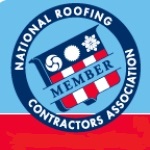East Meadow Roofing: Article About Roof Insulation
This is the rate that reflects how much heat passes through a certain material. When it comes to insulation, the lower the thermal conductivity, the less heat that passes through and escapes from the living space.
Question and answer courtesy of East Meadow roofing experts: How often should I replace my roof insulation?Over time, your attic's insulation begins to loose its effectiveness as it settles and begins to let air through. There are two indications that your insulation may need to be replaced. First, if your roof begins to develop an ice dam, your insulation is no longer keeping heated air in the living space. Second, if your insulation is becoming discolored, it may be acting more like an air filter than insulation and will need to be replaced.

Your roof is your main protection against the outside environment. When it is well-maintained and in tip-top shape, you can rest assured that your home will be free of leaks and will keep you protected against hail and high winds. While the structure of your roof may be strong, your roof's framing and outer roof cover materials will not keep your heated or cooled air from escaping your living space and into the atmosphere. This is the job of your roof insulation, which can be installed by your trusted East Meadow Roofing contractor.
When it comes to insulation, each has a given R-value. This R-value refers to its measure of thermal resistance, or the material's thickness divided by its thermal conductivity. When you investigate different types of insulation, the R-value is given on the description of the product. The US Department of Energy provides a recommendation for the R-value that is most cost-effective for your home based upon your climate and the local costs of heating and cooling.
There is a number of different types of insulation that can be used in your roof and attic space. There are four main types of insulation that can be used to keep your heated or cooled air in your home where it belongs. These include rolls and batts, loose-fill, rigid foam and foam-in-place insulation.
Rolls and batts, also known as blankets, are made from mineral fibers, including fiberglass and rock wool.
Have a question regarding Supreme skylights or Velux skylights? Please ask a roofing professional from Long Island Roofing of East Meadow.
However, these can also be made from natural materials as well, including cotton. This type of insulation comes as a continuous roll that can then cut to fit the area that you are working in.
Rigid foam insulation comes as a foam board that is either made out of polystyrene foam or polyisocyanurate foam. Rigid foam insulation can be cut to fit the space by either using a saw or a utility knife, making it a homeowner-friendly material to work with.
Loose-fill insulation can also be made from a number of materials, including fiberglass, cellulose or rock wool. This type of insulation is often blown into the floor and walls of the attic space through a big machine with the result that the insulation forms to the structure. This type of insulation works very well around areas that are hard to reach, such as around wires and pipes.
Foam-in-place is a combination of spray-dried polymeric resin with a catalyst that, when mixed, produces a unique dry foam. This type of insulation has the ability to fill small gapes and holes in the attic that may be difficult to seal. Additionally, using foam-in-place insulation may qualify you for a tax credit or certain rebates.
Regardless of the insulation that you choose, you can expect it to begin to deteriorate over time. As air makes its way into the fibers, the insulation looses its R-value, which also means that it is losing its ability to reflect heated or cooled air back into the living space.









